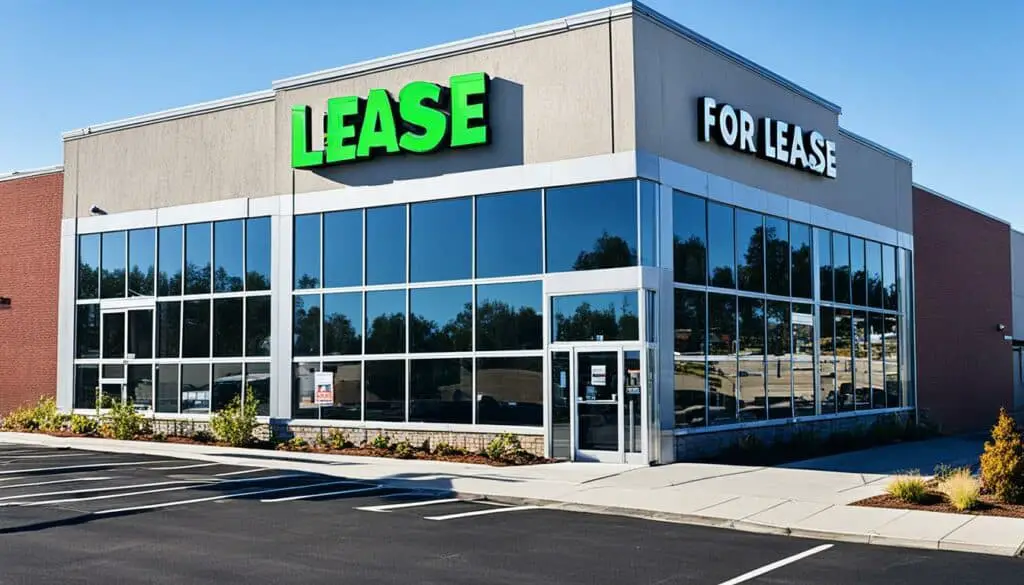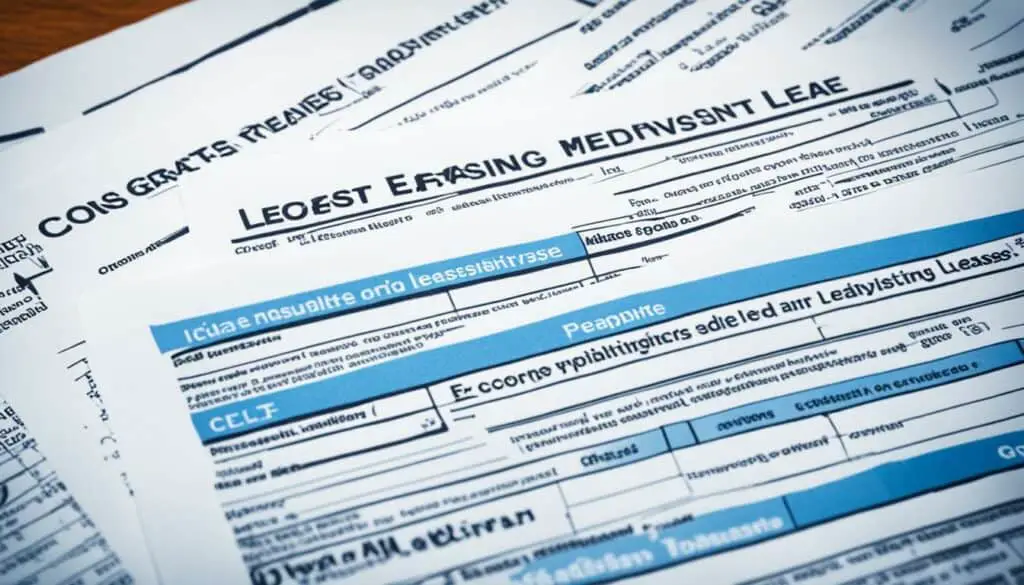Comparing Lease Types: NNN vs. Gross and Modified Gross Leases
Disclaimer: This post may contain affiliate links. These links, if used and purchases made, we may earn a small commission. These affiliate programs do not impact the recommendations we make or the resources we refer you to. Our focus is on providing you the best resources for your nonprofit journey.
When it comes to commercial leases, one size does not fit all. There are different lease types available, each with its own terms, responsibilities, and expenses. But have you ever wondered which lease type is right for your nonprofit or business? Are you aware of the key differences between NNN, gross, and modified gross leases? Let’s dive in and explore the intriguing world of commercial leases and unravel the complexities of lease types.Key Takeaways:
- There are different types of commercial leases, including NNN, gross, and modified gross leases.
- In an NNN lease, the tenant is responsible for all property expenses.
- A gross lease puts the burden of expenses on the landlord, while a modified gross lease splits the responsibility between the landlord and tenant.
- The choice of lease type depends on individual circumstances and preferences.
- Consulting with a real estate attorney can help ensure a favorable lease agreement.
Understanding NNN Leases
NNN leases, also known as triple net leases, are a common type of commercial lease agreement. In these leases, the tenant assumes responsibility for various property expenses in addition to paying the base rent. Let’s delve deeper to understand the intricacies of NNN leases.
In an NNN lease, the tenant is responsible for three main expenses:
- Real Estate Taxes: The tenant is responsible for paying a portion of the property’s real estate taxes.
- Building Insurance: The tenant is required to cover the costs of insuring the leased property.
- Common Area Maintenance (CAM): CAM expenses, such as landscaping, parking lot maintenance, and common area utilities, are the tenant’s responsibility.
It’s important to note that NNN lease expenses are typically calculated on a pro-rata basis. This means that the tenant’s share of expenses is determined by their percentage of leased space in relation to the total property size. To illustrate, let’s consider an office building with a total area of 10,000 square feet. If a tenant leases 2,500 square feet, they would be responsible for 25% (2,500/10,000) of the property expenses.
NNN lease rates are quoted annually per square foot. This allows both the landlord and the tenant to have a clear understanding of the financial obligations associated with the lease. Furthermore, NNN leases offer benefits to both parties involved. Landlords can enjoy the freedom from day-to-day property costs, while tenants have control over the condition and maintenance of their leased space.
To illustrate the breakdown of expenses in an NNN lease, here’s an example:
| Expense | Tenant’s Responsibility |
|---|---|
| Real Estate Taxes | $5,000 |
| Building Insurance | $3,000 |
| Common Area Maintenance (CAM) | $2,500 |
| Total Expenses | $10,500 |
Understanding the dynamics of NNN leases is important for both tenants and landlords. Tenants should carefully consider the financial implications of assuming additional expenses, while landlords can take advantage of a lease structure that offloads certain financial burdens. Ultimately, the choice between an NNN lease and other lease types depends on the specific needs and objectives of both parties.
Exploring Gross Leases
In the world of commercial leases, the gross lease stands out as a leasing option that provides tenants with a predictable and all-inclusive rental cost. In this type of lease, the landlord assumes all property expenses, making it an attractive option for tenants seeking simplicity and stability.
Under a gross lease agreement, the tenant pays a fixed rent that covers not only the base rent but also various expenses associated with the property. These expenses typically include:
- Real estate taxes: Property taxes are an essential component of any lease. With a gross lease, tenants are relieved of the responsibility of directly paying property taxes, as it is the landlord’s duty to cover these costs.
- Building insurance: Insurance is crucial for protecting the property. In a gross lease, the landlord takes on the responsibility of obtaining and paying for building insurance, giving tenants peace of mind.
- Common area maintenance (CAM): Maintaining the common areas of a commercial property is essential for creating a safe and appealing environment for all tenants. With a gross lease, tenants are not required to contribute to CAM costs, as the landlord covers these expenses.
- Utilities: Depending on the specific lease agreement, utilities may also be included in the rent. This can provide further convenience for tenants, as they can avoid the hassle of setting up and managing utility accounts.
Gross leases are particularly common in multi-tenant high-rise buildings, as the all-inclusive rent structure simplifies the leasing process and allows for a more predictable cash flow for both landlords and tenants.

Pros and Cons of Gross Leases
While gross leases offer several advantages, they may not be suitable for every tenant or property. Let’s explore some of the pros and cons of this lease type:
| Pros | Cons |
|---|---|
| 1. Predictable monthly rental cost | 1. Higher rent compared to other lease types |
| 2. Simplicity and convenience | 2. Limited control over property expenses |
| 3. Landlord assumes financial risks | 3. Potential for higher rent if expenses increase |
| 4. Less administrative burden for tenants | 4. Limited ability to negotiate expenses |
Overall, gross leases provide tenants with a hassle-free leasing experience and the ease of managing a fixed monthly rental cost. However, tenants should carefully consider the potential trade-offs, such as higher rent and less control over property expenses, before committing to a gross lease agreement.
Unpacking Modified Gross Leases
A modified gross lease is a flexible agreement between a tenant and a landlord. The rent quoted in a modified gross lease includes the base rent, common area maintenance (CAM), property taxes, and building insurance. This type of lease offers a level of predictability for both parties involved, as it combines certain expenses into one monthly payment.
While the specific terms of a modified gross lease can vary, it is important for landlords and tenants to negotiate and clarify the responsibilities and exclusions of utilities and other expenses. The terms of a modified gross lease should be clearly defined in the lease agreement in order to avoid any misunderstandings or disagreements in the future.
One of the benefits of a modified gross lease is the ability to divide expenses between the landlord and tenant. This can provide a more balanced arrangement where both parties contribute to the costs associated with the property. Additionally, tenants may find it easier to budget for their monthly lease payments, as they have a clear understanding of the included expenses.
On the other hand, the exclusion of certain expenses in a modified gross lease may result in additional financial responsibilities for the tenant. Utilities, for example, are commonly excluded from the rent in a modified gross lease, which means the tenant will be responsible for paying these separate utility bills. This should be taken into consideration when evaluating the overall cost of the lease.
Comparing Lease Types
When evaluating different lease types, it’s essential to consider the specific needs and requirements of both tenants and landlords. While modified gross leases provide a balance between the responsibilities of the parties involved, other lease types, such as NNN and gross leases, also have their own advantages and disadvantages.
In the next sections, we will explore NNN leases, where tenants are responsible for all property expenses, and gross leases, where landlords assume the responsibility of covering all expenses. By understanding the nuances of each lease type, tenants and landlords can make informed decisions and establish lease agreements that align with their priorities and financial capabilities.

| Lease Type | Responsibility for Expenses |
|---|---|
| Modified Gross Lease | Shared between landlord and tenant |
| NNN Lease | Tenant |
| Gross Lease | Landlord |
Benefits and Detriments of Modified Gross Leases
Modified gross leases offer both benefits and detriments to both tenants and landlords. Let’s explore some of them:
Benefits of Modified Gross Leases
- Cost savings: Tenants can save money with a modified gross lease by shifting certain expenses to the landlord. This includes unexpected increases in property taxes or building insurance, which can be a significant financial burden for tenants. By having the landlord take on these expenses, tenants can free up their budget for other business needs.
- Flexibility: Modified gross leases offer flexibility for landlords and tenants to negotiate and tailor the lease terms to meet their specific requirements. This can include accommodating tenant needs, such as capping lease expenses for municipal or non-profit tenants. The ability to customize the lease agreement brings added convenience and peace of mind to both parties involved.
- Predictable costs: With a modified gross lease, tenants can enjoy the benefit of predictable monthly rental costs. By including various expenses within the lease agreement, tenants can plan their budget more effectively, knowing the specific amount they need to allocate for rent and other shared expenses each month.
Detriments of Modified Gross Leases
- Potential for increased expenses: While modified gross leases can provide cost savings, there is also the potential for increased expenses for tenants if property expenses, such as taxes or insurance rates, rise unexpectedly. It’s important for tenants to carefully review the lease agreement and assess potential risks before committing to a modified gross lease.
- Difficulty in selling property: For landlords, one potential detriment of modified gross leases is the potential difficulty in selling a property with such leases as an investment. Some buyers may be hesitant to take on a property with modified gross leases due to uncertainties associated with shared expenses and the potential for fluctuating costs.
Overall, modified gross leases provide a balance between shifting expenses and shared responsibilities between tenants and landlords. While they offer benefits such as cost savings and flexibility, it’s important for all parties involved to carefully consider the potential detriments before entering into a modified gross lease agreement.

Wrapping Up
In conclusion, understanding the differences between lease types is crucial when making decisions about commercial space. NNN leases, or triple net leases, require tenants to bear the expenses associated with property taxes, insurance, and maintenance. On the other hand, gross leases relieve tenants of these responsibilities, as the landlord assumes all expenses. For those seeking a balance, modified gross leases split costs between landlords and tenants.
When selecting a lease type, it is essential to consider the individual circumstances and preferences of both parties involved. Consulting with a real estate attorney can provide valuable guidance and help navigate the complexities of commercial leases. Their expertise can ensure a favorable agreement that aligns with the needs of both the tenant and the landlord.
Whether you’re a tenant or a landlord, a clear understanding of lease types will empower you to make informed decisions that align with your goals. By carefully weighing the pros and cons of NNN, gross, and modified gross leases, you can find the lease arrangement that best suits your needs. Finding the right type of lease can contribute to a successful and mutually beneficial long-term tenant-landlord relationship.
FAQ
What is a commercial lease?
A commercial lease is a contractual agreement between a lessor (property owner) and a lessee (someone who wants to use the property) for commercial use, such as office space or commercial property.
What are the different types of commercial leases available?
The different types of commercial leases include triple net leases (NNN), gross leases, and modified gross leases.
What is a triple net lease (NNN lease)?
A triple net lease is a lease in which the tenant is responsible for paying all property expenses in addition to the base rent, including real estate taxes, building insurance, and common area maintenance (CAM).
What is a gross lease?
A gross lease is a lease in which the landlord is responsible for all property expenses. The tenant pays a fixed, all-inclusive rent that covers base rent and expenses such as real estate taxes, building insurance, common area maintenance (CAM), and utilities.
What is a modified gross lease?
A modified gross lease is a flexible lease agreement in which the rent includes the base rent, common area maintenance (CAM), property taxes, and building insurance. However, some expenses like utilities may be excluded. The specific terms of a modified gross lease can be negotiated between the landlord and tenant.
What are the benefits of a modified gross lease?
Modified gross leases offer benefits to both tenants and landlords. For tenants, it can provide cost savings by shifting responsibility for certain expenses to the landlord. Landlords can benefit by accommodating tenant requirements and capping lease expenses for certain tenants.
What are the detriments of a modified gross lease?
Detriments of a modified gross lease include the potential for increased expenses for tenants if property expenses rise and the potential difficulty of selling a property with modified gross leases as an investment.
How do I choose the right lease type?
The choice of lease type depends on individual circumstances and the preferences of both parties involved. Consulting with a real estate attorney can help navigate the complexities of commercial leases and ensure a favorable agreement.
Source Links
- https://www.lighthousecre.com/cre-terms/modified-gross-lease/
- https://elifinrealty.com/what-is-the-difference-between-a-triple-net-nnn-a-modified-gross-and-a-full-service-lease/
- https://www.wework.com/ideas/professional-development/business-solutions/nnn-lease-versus-a-gross-lease-whats-the-difference







